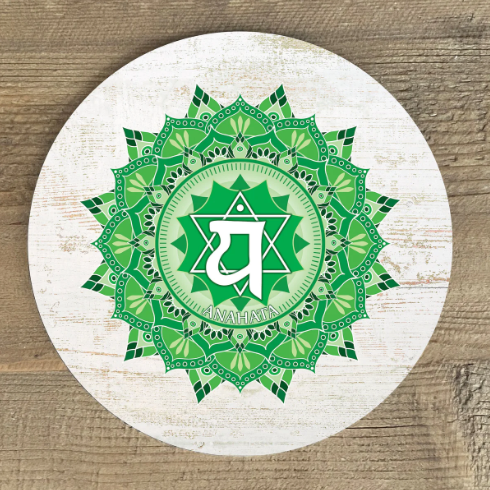The Heart Chakra, also known as the Anahata in Sanskrit, is the fourth chakra of the human energy system. Located in the center of the chest, the Heart Chakra is associated with love, compassion, and connection to others. It is also associated with the color green and the element of air.
Physical Location and Symbolism
The Heart Chakra is located in the center of the chest, at the level of the heart, and is associated with the color green. The symbol of the Heart Chakra is a lotus flower with twelve petals, which represents the twelve qualities of the chakra. These qualities are love, joy, peace, harmony, forgiveness, empathy, compassion, acceptance, understanding, balance, unity, and trust.
Functions and Characteristics
The Heart Chakra is responsible for our ability to give and receive love, as well as our ability to connect with others. It governs our relationships with ourselves and others, as well as our capacity for empathy and compassion. When the Heart Chakra is balanced, we are able to experience love and connection with others, as well as a sense of inner peace and harmony.
The energy of the Heart Chakra is often described as gentle, expansive, and nurturing, and is associated with the element of air. It is also connected to the heart, lungs, and circulatory system.
Imbalances and Healing
When the Heart Chakra is imbalanced, it can manifest in various physical, emotional, and mental symptoms. Physical symptoms can include heart problems, asthma, and allergies, while emotional symptoms can include feelings of loneliness, anger, jealousy, and lack of empathy. Mental symptoms can include a sense of disconnection from oneself and others, as well as difficulty with self-love and self-acceptance.
To heal the Heart Chakra, it is important to focus on practices that promote love, compassion, and connection. This can include practicing self-love and self-acceptance, cultivating empathy and compassion towards others, and engaging in activities that promote connection, such as spending time with loved ones or volunteering. Other techniques for healing the Heart Chakra include working with crystals, such as rose quartz or emerald, which are believed to have heart-opening properties, and incorporating foods that support heart health and circulation, such as leafy greens and berries.
Conclusion
The Heart Chakra is a powerful energy center that is responsible for our ability to give and receive love, as well as our ability to connect with others. When this chakra is balanced, we are able to experience love and connection with others, as well as a sense of inner peace and harmony. Imbalances in the Heart Chakra can lead to a range of physical, emotional, and mental symptoms, but by focusing on practices that promote love, compassion, and connection, we can heal the Heart Chakra and achieve a sense of balance and harmony in our lives.
What is the Heart Chakra?

